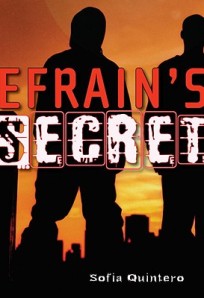8 a.m.
Let’s get this thing going! I’m going to start with Ron Koertge’s Shakespeare Makes the Playoffs. Nothing like a novel in verse to get you through that oh-so-important first book. I’ll be updating this post with check-ins through the day. Happy reading, everybody!
10:40 a.m.
Man, I thought that would be a nice quick one to open it up with – but I forgot that Ron Koertge is a genius and I would want to read almost everything two or three times. Loved this one even more than Shakespeare Bats Cleanup. Funny and charming and a delight to read.
Next up: Stitches by David Small!
11:30 a.m.
Wow. I guess I see what all the fuss was about. Stitches was about as powerful, imagery-wise, as a graphic novel can be. And what a story he has to tell.
That’s left me pretty haunted, so I’m going with something fun next: The Case of the Case of Mistaken Identity by Mac Barnett! I’ve been looking forward to this one for a while – held it out as a good read-a-thon choice.
12:20 p.m.
“Every Librarian is a highly trained agent. An expert in intelligence, counterintelligence, Boolean searching, and hand-to-hand combat.” Drat! My cover is blown! (Also, this book is as awesome as expected. Which is highly awesome!)
1:30 p.m.
I am on a serious roll here – three five-star books in a row to start out the read-a-thon! That book cracked me up – and I’m still giggling over the endpapers.
Next book: If You Come Softly by Jacqueline Woodson
3:30 p.m.
At the exact moment that I was reading Miah and Ellie’s breathtaking first kiss, Yadier Molina hit a three-run homerun. Woohoo!
4:30 p.m.
Well that was a gorgeous, powerful book. The narrative shifts between Ellie and Miah worked for me, but I did find the perspective shifts from first to third and back kind of jarring. Other than that, I loooooved it. (And I had a lovely time reading it sitting at a wide wooden bar with a very tasty spinach, goat cheese, and carmelized onion pizza and a couple of Harpoon IPAs. That right there plus a great book is the way to spend an afternoon!)
Next: The Strange Case of Origami Yoda by Tom Angleberger
5:40 p.m.
Definitely fun. We all need an Origami Yoda in our lives. Now I’m taking a little break to see how far C.C. Sabathia can take this little thing he’s got going on.
Next: The Gardener by S.A. Bodeen
8:45 p.m.
Well, that one was more interesting in concept than in execution. But well paced – it did keep me reading.
I think it’s time for another graphic novel next – Courtney Crumrin and the Night Things by Ted Naifeh.
9:30 p.m.
Courtney Crumrin just erased any leftover disappointment from my last selection. Love this kid. And this is a delightfully ruthless children’s author. When Courtney arrives at a new school and is shunned by all the cool kids, there is of course one geeky boy who tries to befriend her. Her new best buddy, right? Not so fast – he’s eaten by goblins just a few pages in. Awesome.
Next up – Make Lemonade by Virginia Euwer Wolff
1:10 a.m.
Well now I’m all sad that I didn’t bring the second and third books in the Make Lemonade trilogy home with me. Have to pick them up at work next week. What a wonderful book.
I’m going to start The Devil’s Kiss by Sarwat Chadda, but I’m thinking I’m only good for another hour or so. Hope everyone else’s reading is going well!
2:15 a.m.
Signs that it’s time to call it a night: you get sleepy during a first chapter in which the heroine brutally murders a six-year-old boy. I got a couple chapters into The Devil’s Kiss, but I’m about ready to curl up under a pile of blankets.
So my total is 8 books, 2 of which were graphic novels, plus part of book number 9. Didn’t really keep track of time spent reading and I’m much too lazy to calculate pages read, so that’s all the statistics you’re getting out of me.
For those hardy souls who are going for the full 24 hours: I salute you! And good night.

